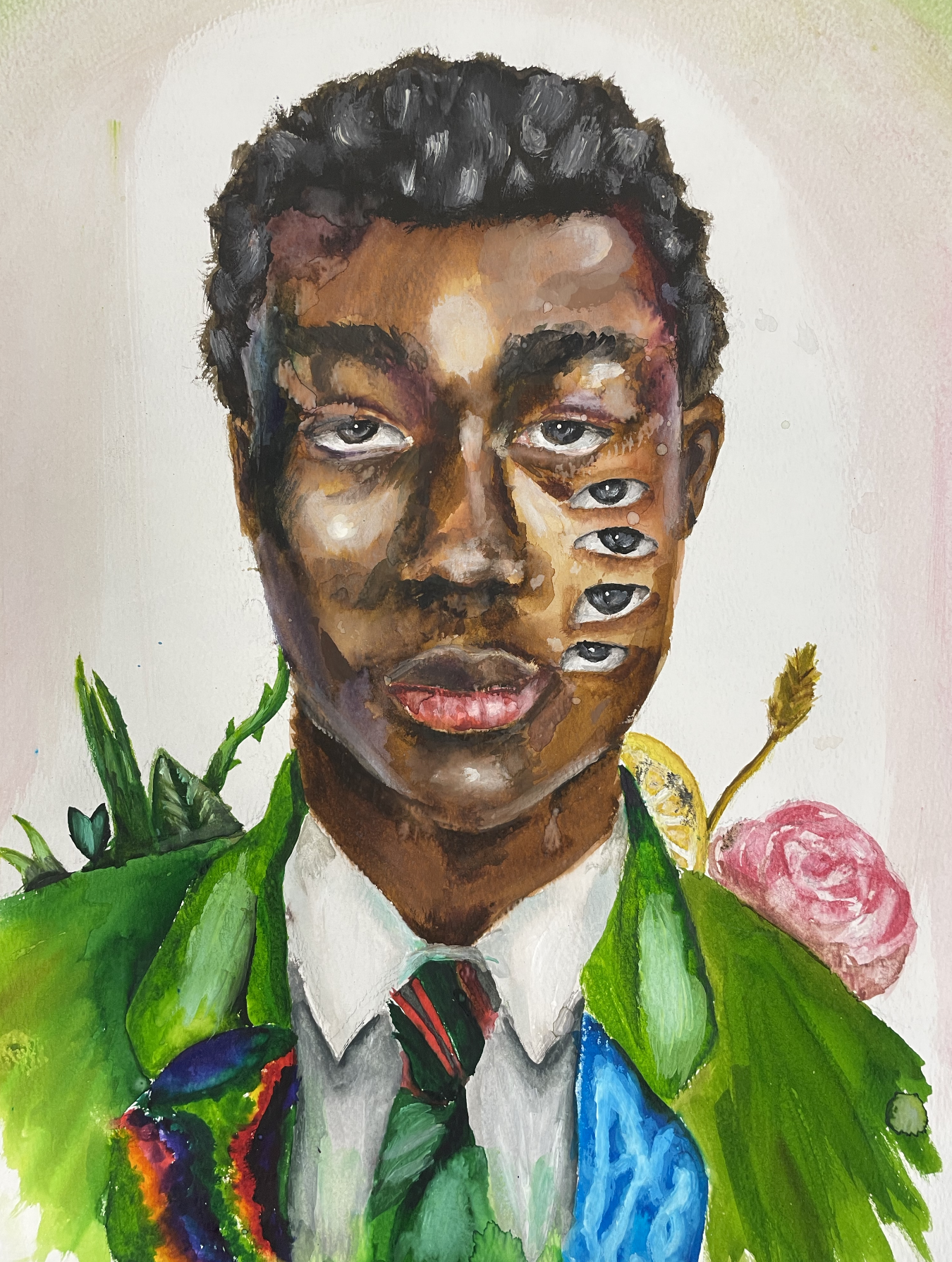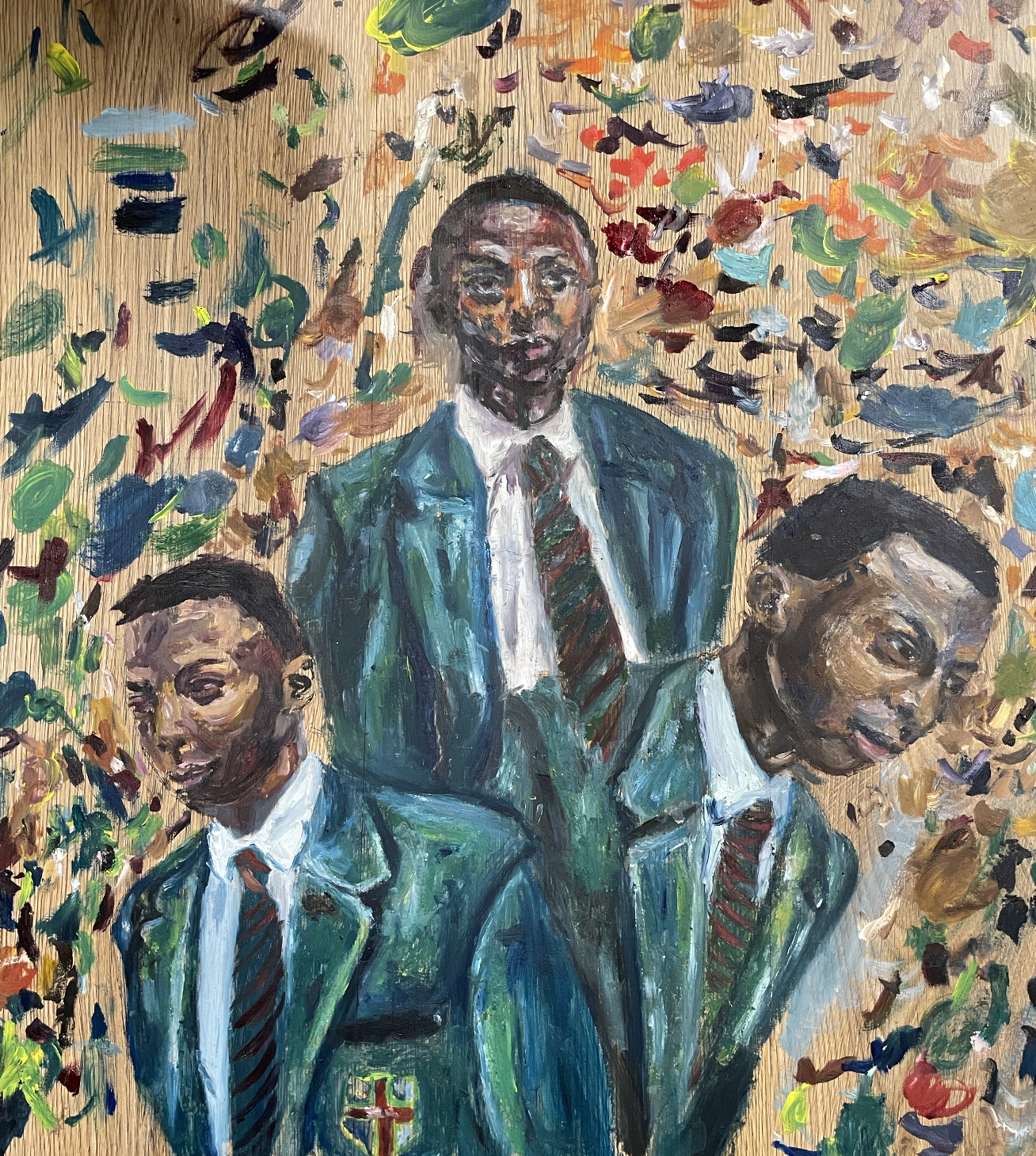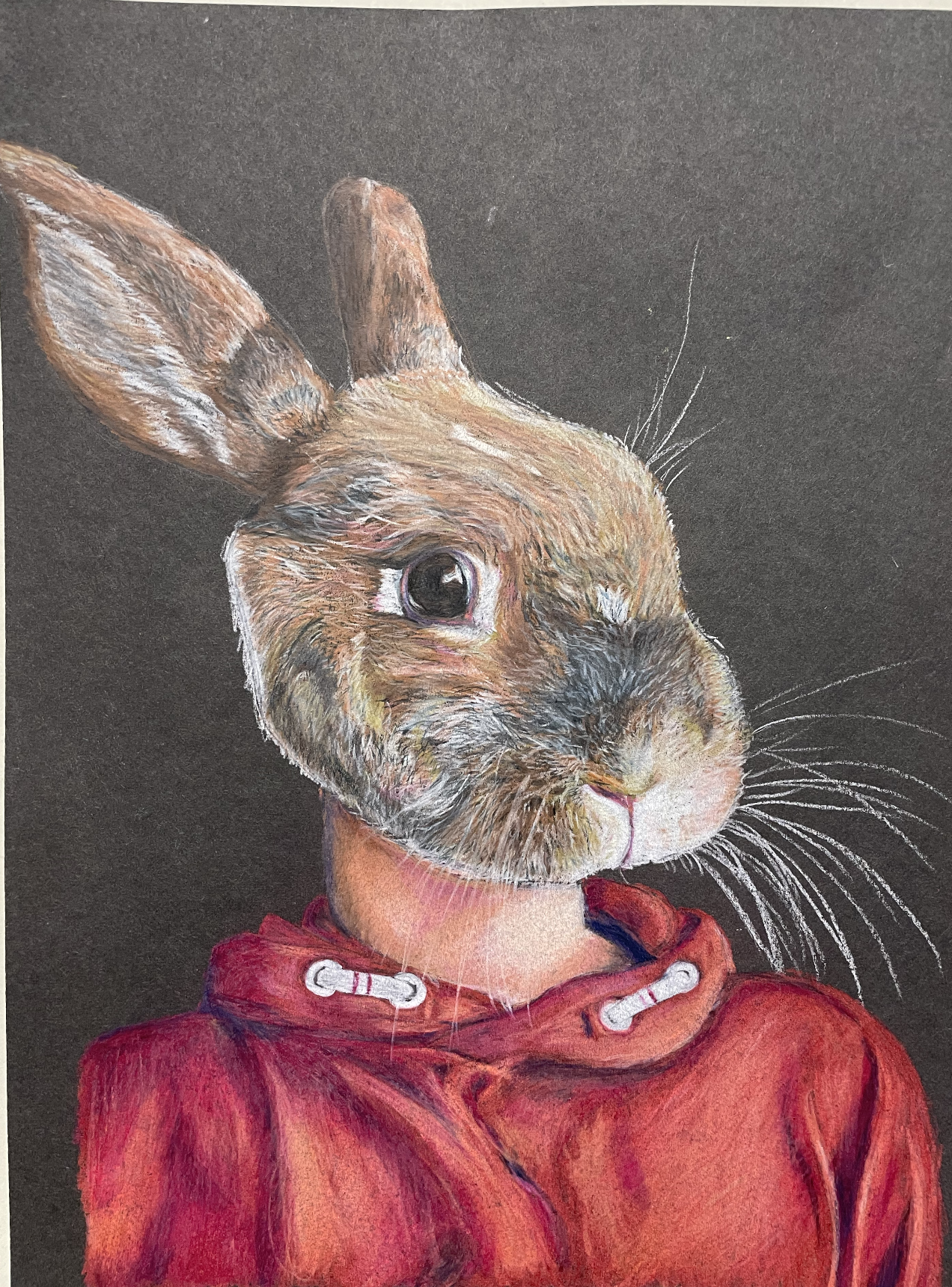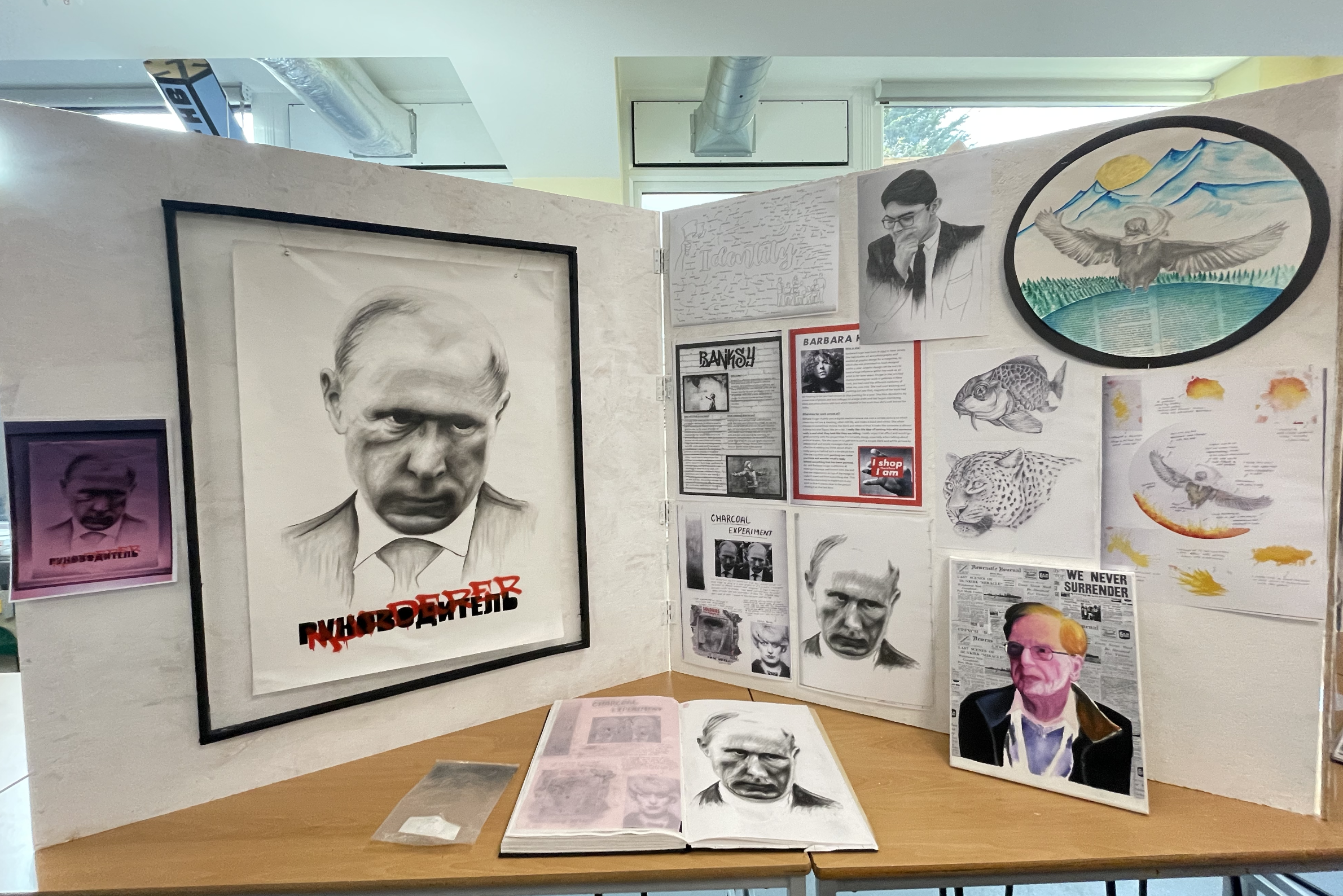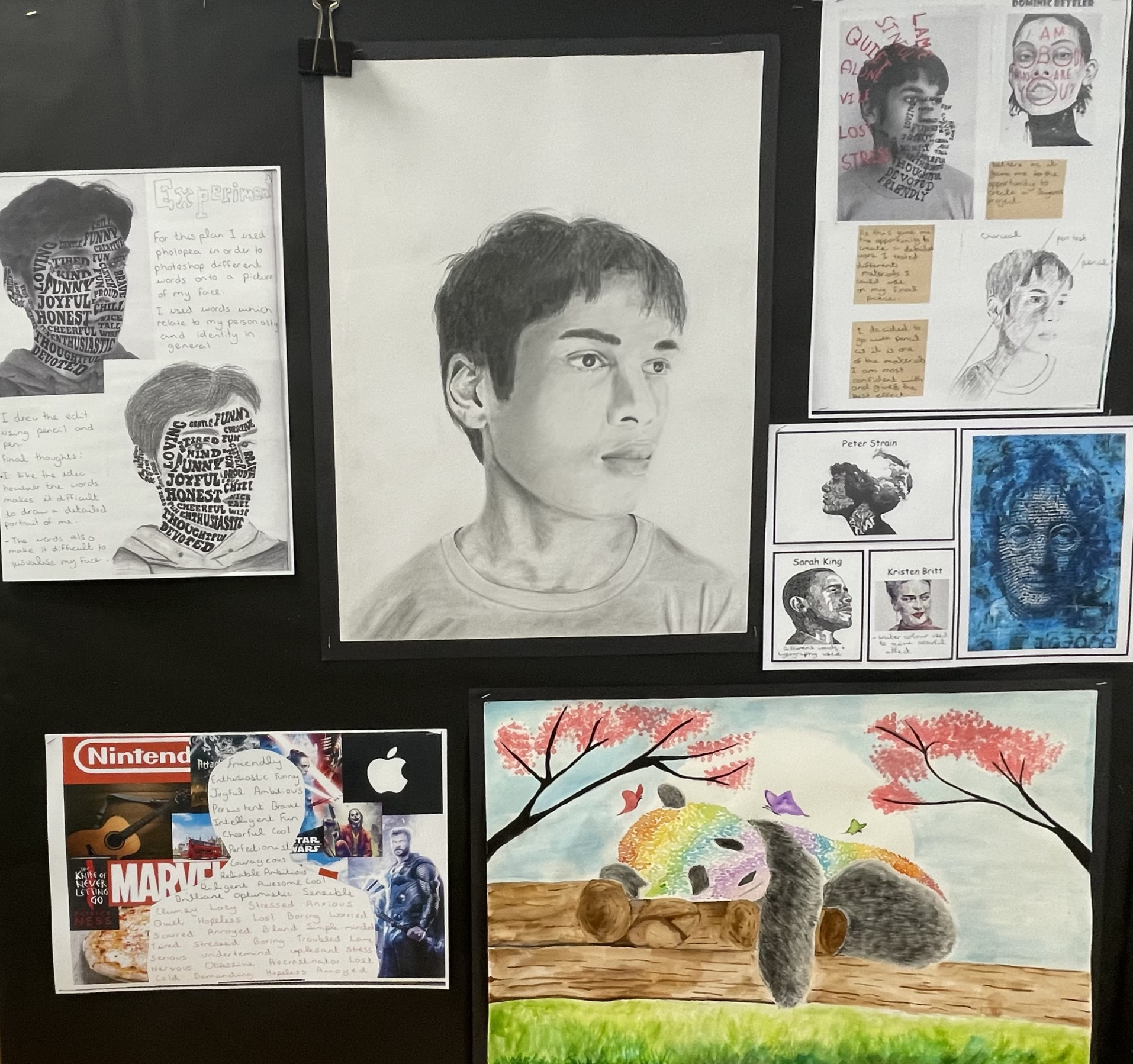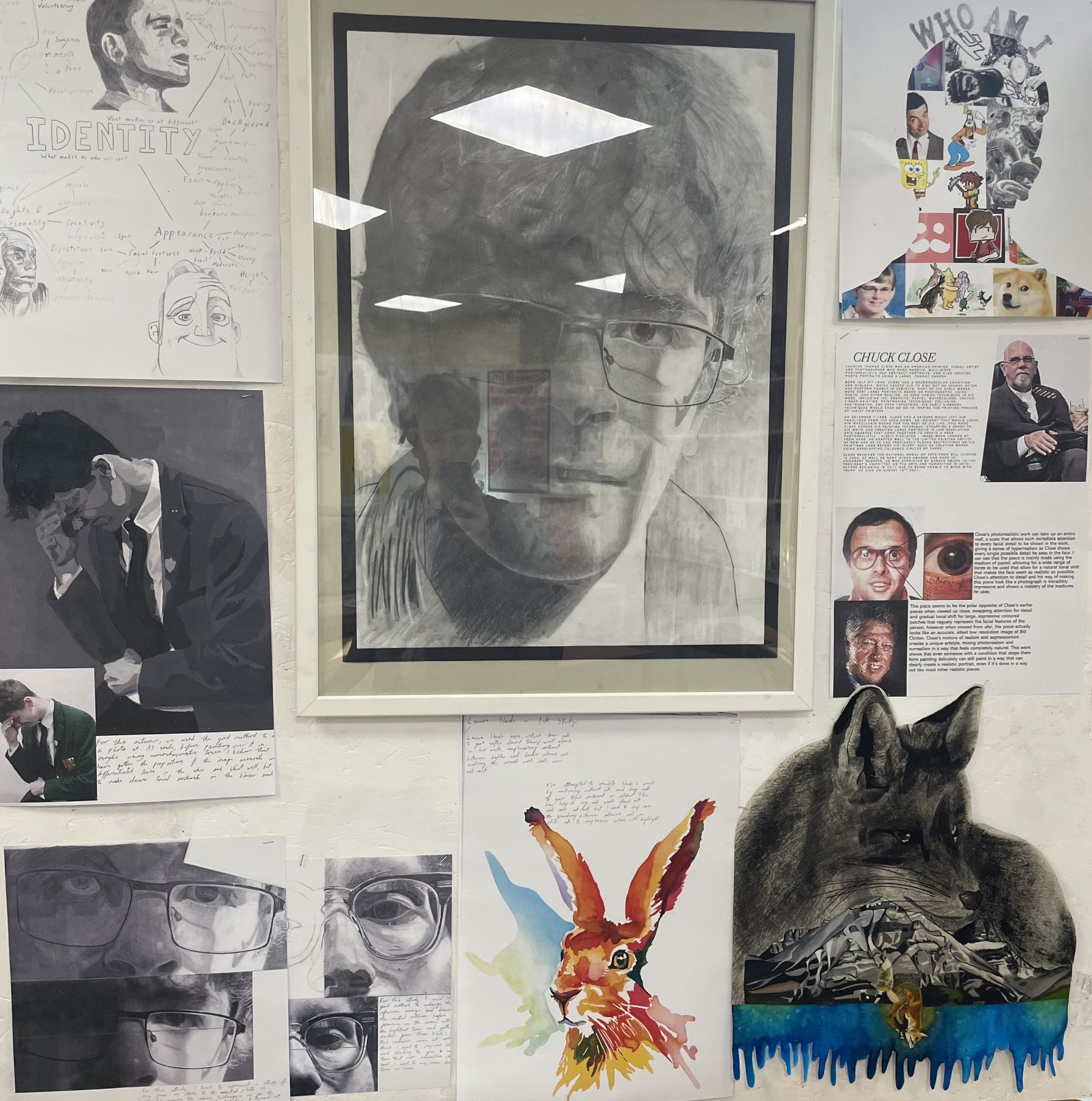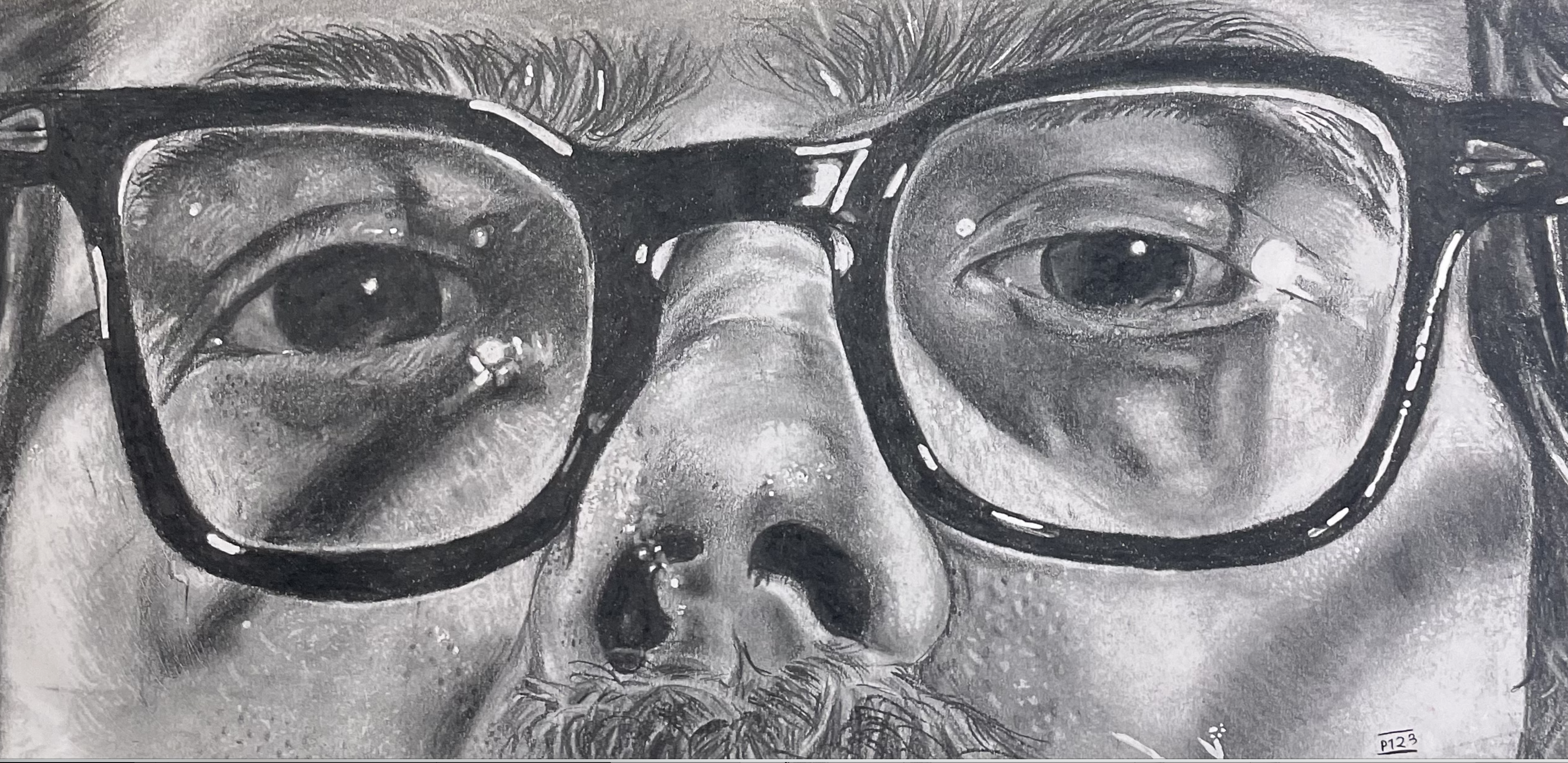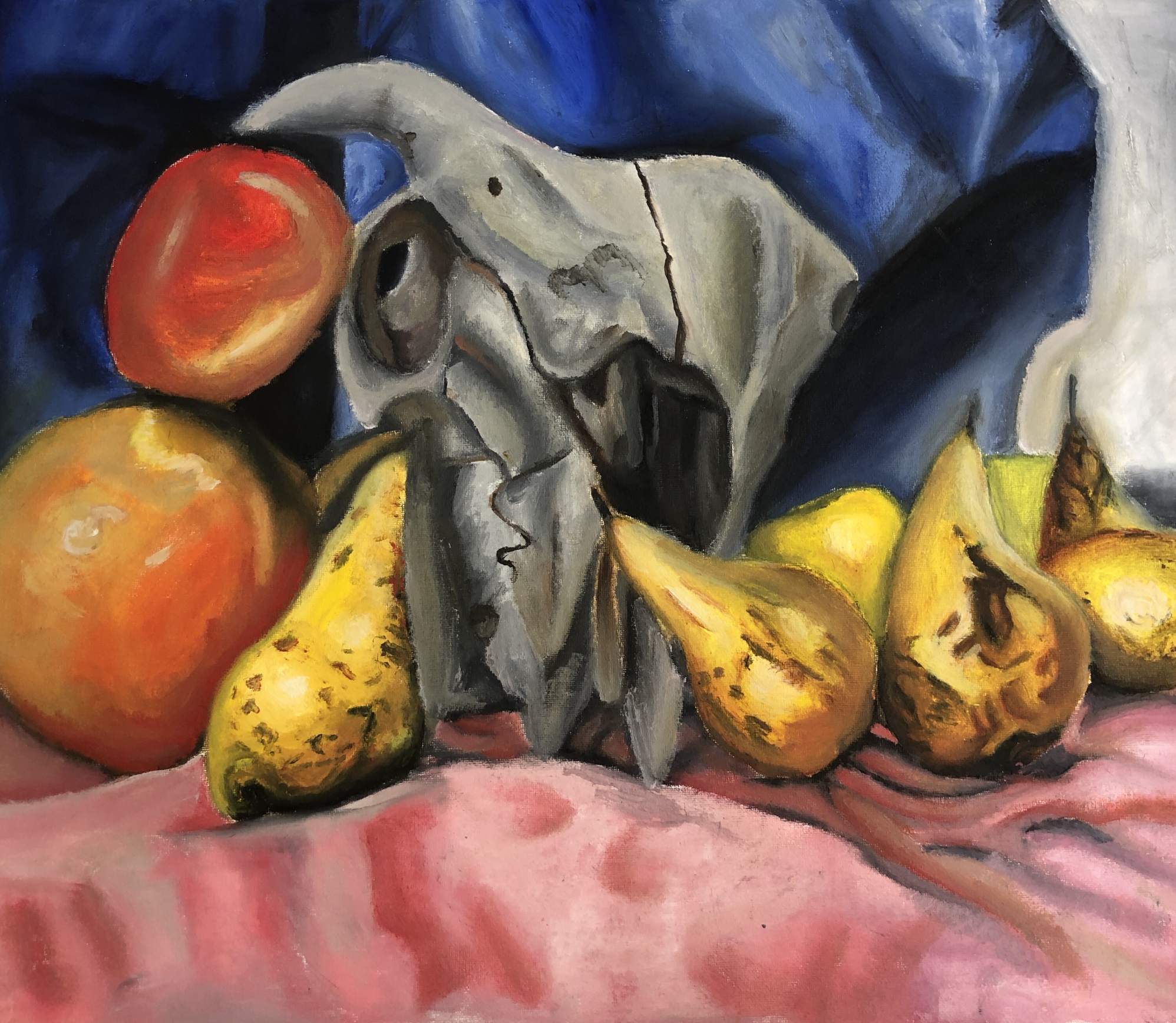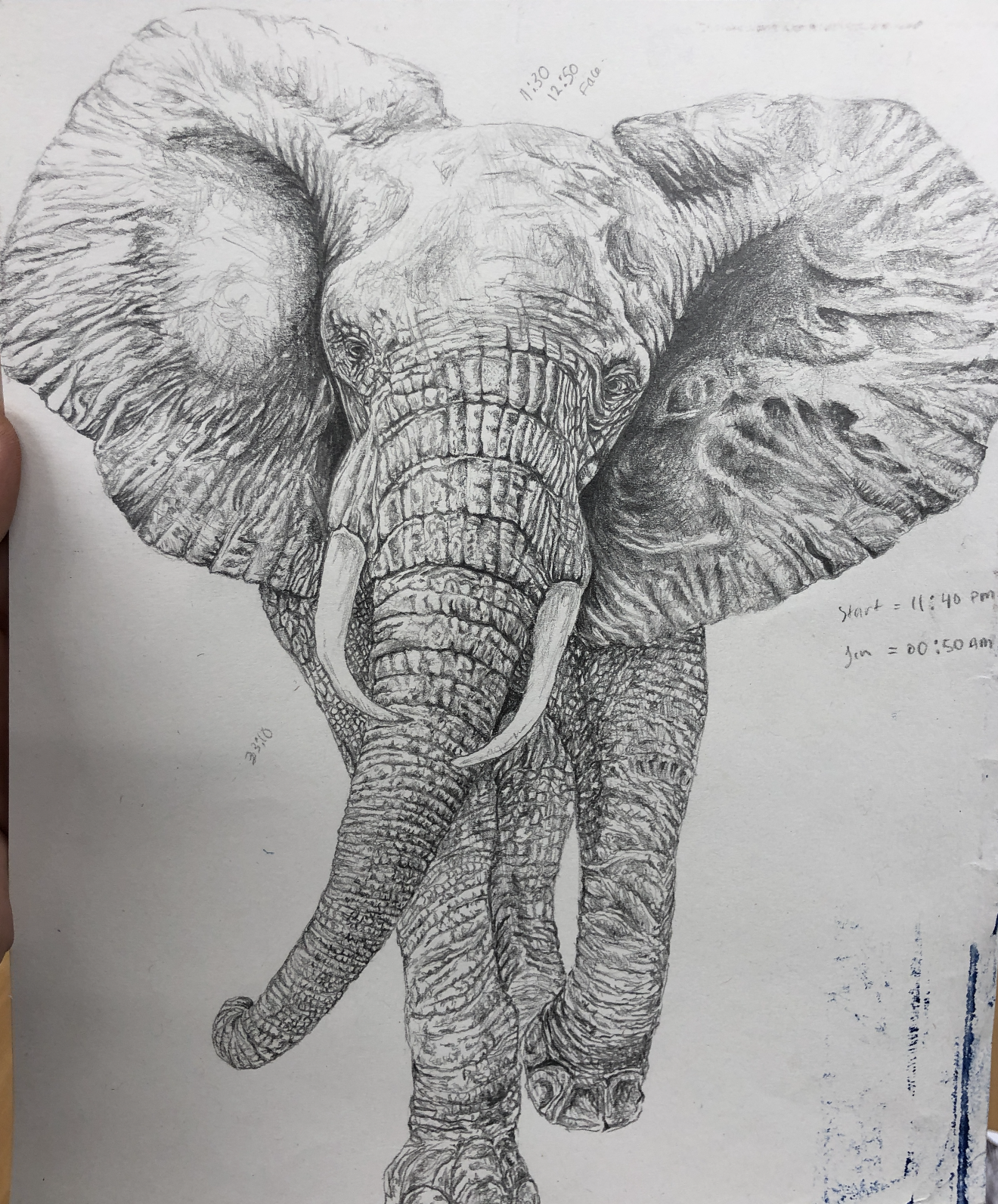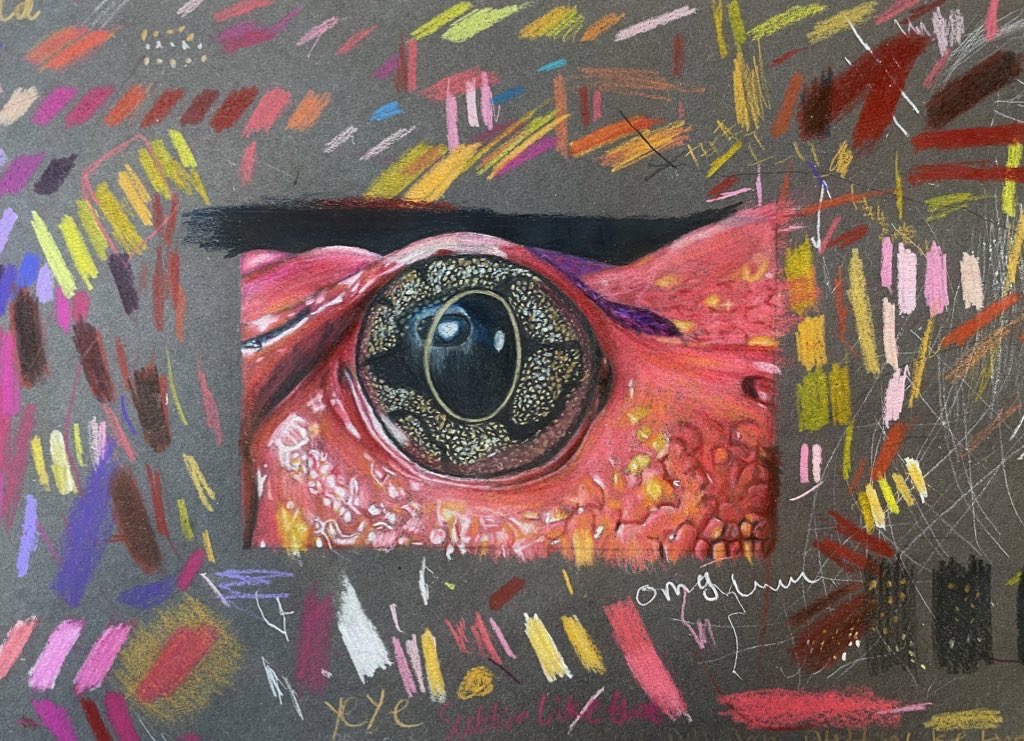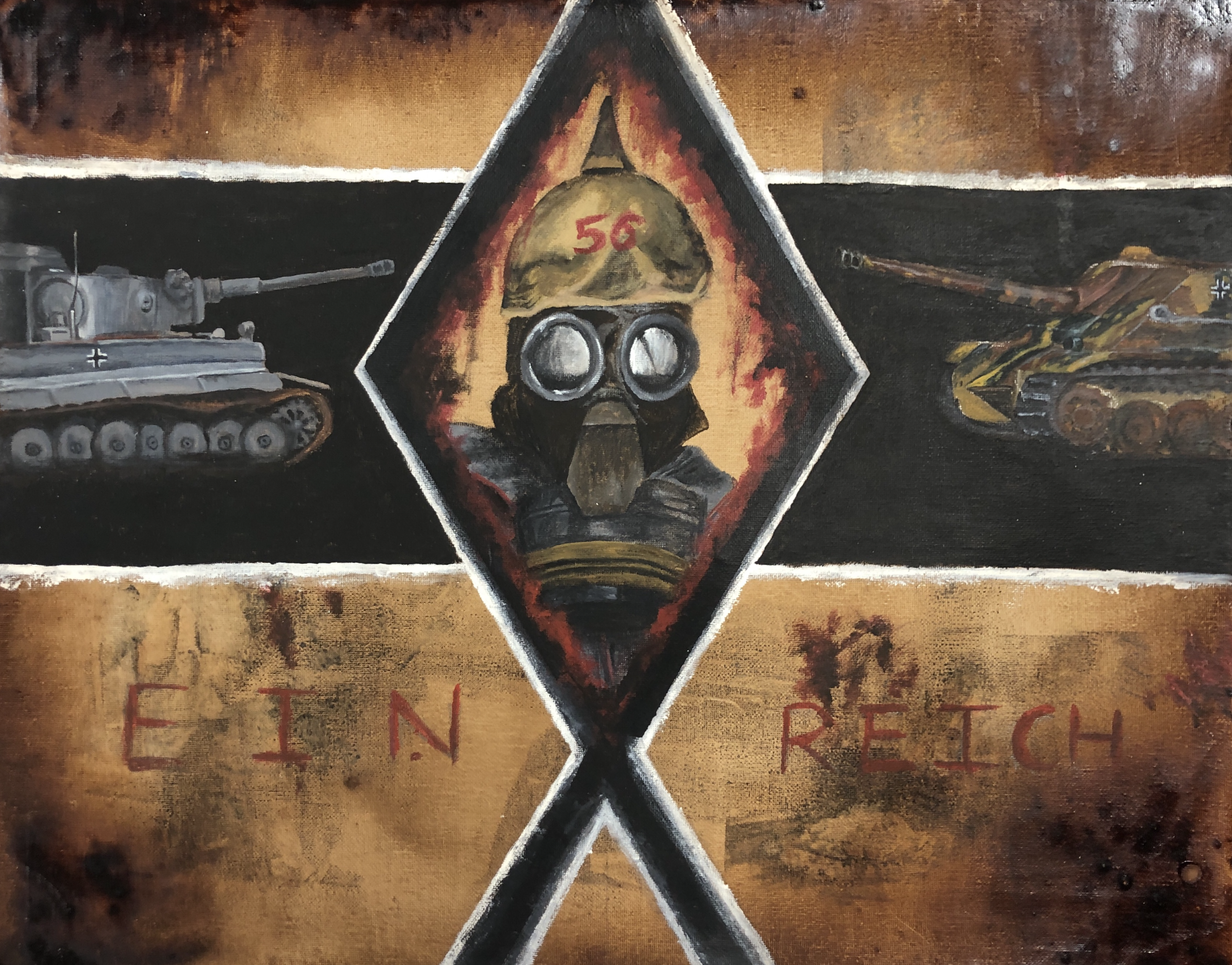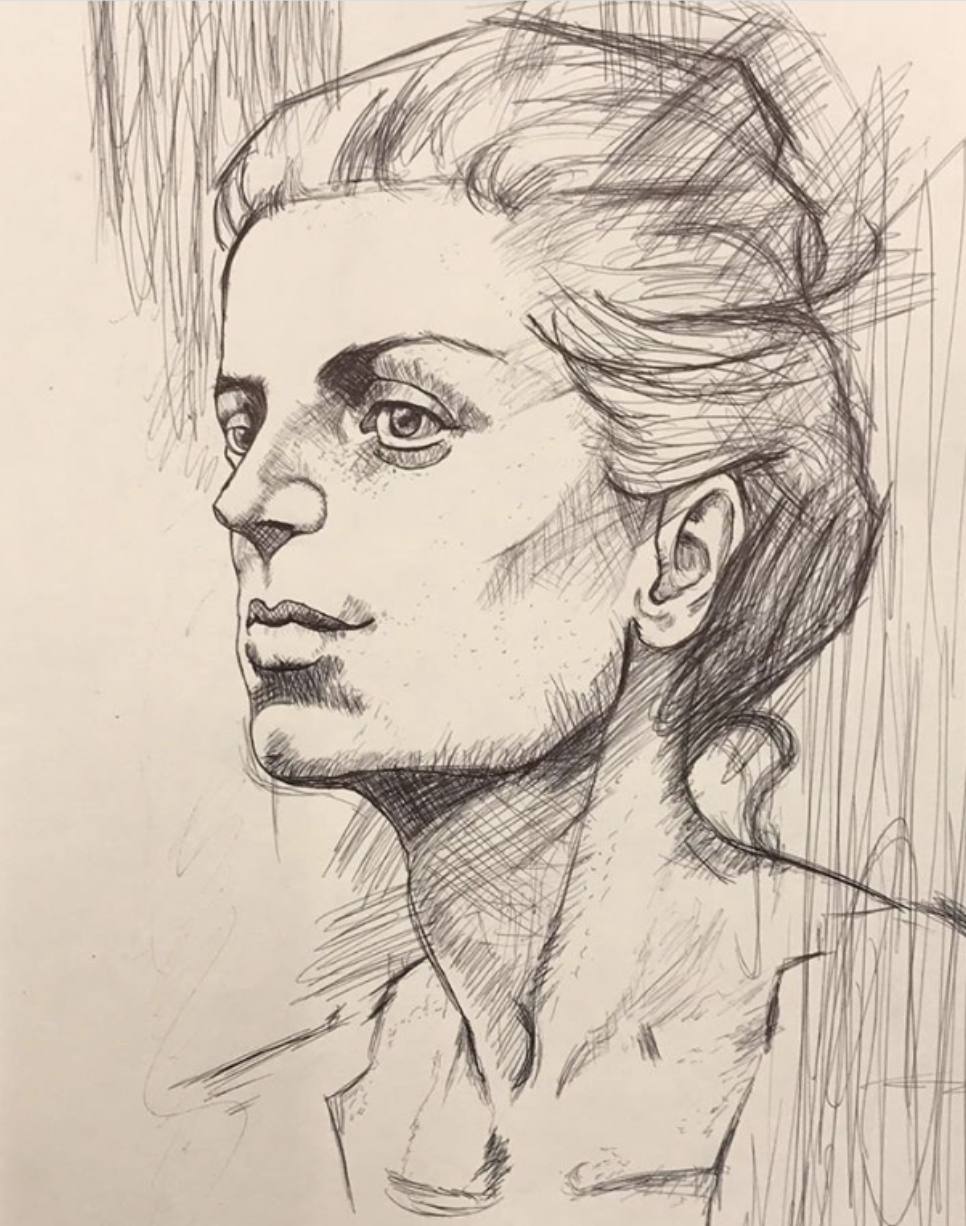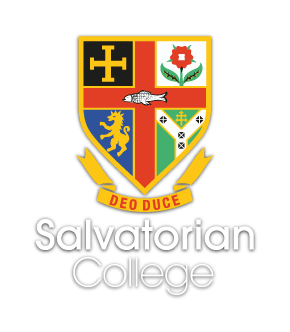Art and Design
Art and Design at Salvatorian
“If I could say it in words there would be no reason to paint.” – Edward Hopper
Salvatorian believes that Art, craft and design education provides and inspires personal expression, cultural understanding, creative and practical responses, promoting imaginative risk taking to provide solutions to our material, emotional, social and virtual worlds.
Our curriculum aims to engage, inspire and challenge pupils, equipping them with the knowledge and skills to participate in, experiment with, invent and create their own works of art, craft and design.
Our aims:
Pupils should be able to think creatively and critically. They should investigate and evaluate a wide range of creative outcomes from the past and present to develop rigorous understanding of the many disciplines within art, craft and design and how they shape our history and future. This will enable pupils to contribute as confident citizens and future professionals to the culture, creativity, economic success, leisure, material and emotional well-being of our society within both national and global contexts.
Students will acquire skills that enable them to draw, paint, sculpt, print, photograph, design and make personal works of Art. We aim to make the curriculum sequential in the skills learnt, starting with the fundamental elements of drawing and colour theory, then allowing students to apply this essential knowledge while exploring painting, 3D work, printing, design, and critically understanding and appreciating the work of others.
In year 9, students begin to develop personal work with more advanced media and materials, preparing them for the rigorous demands and mastery expected at GCSE Fine Art or Graphics at KS4. Knowledge and practical skills underpin each other, and students systematically acquire both alongside each other in the curriculum. Learning about Artists and various techniques is intrinsically tied into all practical lessons and homework, allowing students to truly learn about Art both historically and in modern Britain, while developing their own practical knowledge and skills.
Our Facilities include:
- Two large and fully equipped Art specialist rooms with a separate Kiln Room
- A dedicated 24-computer graphics suite with graphic tablets and access to the Adobe Creative Suite
- A technician prep-room with access to laser-cutting, 3D modellers and a 3D Printer.
- As we are in the same faculty as Design and Technology, we share 3D and resistant materials facilities in order to allow our pupils to extend their creative intentions in any media or materials.
Want to find out more?
Contact Mr G James at G.james@salvatorian.harrow.sch.uk
Our Staff
Mr G James – Head of Department
Ms I Phillips – Teacher of Art and DT
Ms J Summers – Teacher of Art and DT
Mr J Elder – Creative Arts Technician
Key Stage Three
Throughout the academic year, students’ comprehension of Art is enhanced in weekly 1-hour lessons. Our teaching approach uses a spiral curriculum, revisiting and building on previous knowledge while increasing in complexity over time. This tends to follow the main disciplines of Art and specialisms within the department, often sequenced as Drawing, Painting and then Sculputre, with other media and materials including screen printing woven into the curriculum.
In Year 7, students investigate the foundational elements of Art through drawing, examining how these elements are employed in the compositions of artists and designers. They are taught to use essential art terminology for critiquing their own work and that of their peers. These concepts are further explored in a culminating cross-curricular project during the summer term looking at Pop Art and Food, where students select, delve into, and create a personal piece. This project reinforces and broadens their understanding of art elements, making their knowledge deep and applicable across other subjects.
The structure continues in Year 8, with a focus on Art movements such as Surrealism, as the central theme. Students enhance their understanding by building on previous lessons and expanding their skills in material exploration and contextual connections.
Year 9 introduces Portraiture as the core theme, with students engaging deeply with contextual Artists such as Kehinde Wiley and Chuck Close. This enables them to develop highly personal and intricate project responses. They will also study other forms of Art such as Graphic Novels and Comic books, as well as delving into Architecture and completing sculptural work.
Students are encouraged to refine their artistic skills and techniques, with a strong emphasis on contextual studies and the use of specific vocabulary in both verbal and written assessments to enhance their artistic development. Classroom discussions and homework assignments prioritize the understanding of context and vocabulary to ensure students critically reflect and refine their work. The foundational skills established in KS3 prepare students to confidently select relevant research and media, understanding the critical roles of exploration, evaluation, and refinement in achieving successful artistic outcomes.
Homework, requiring at least one hour of effort per week, aims to reinforce and extend classroom learning. Students should complete their assignments in an A4 sketchbook, available from the department for £1.00. Additionally, students are invited to participate in the weekly Art Club for Key Stage 3, held most lunchtimes.
Key Stage Four
At the GCSE level, students advance the skills developed during KS3, forging a personal and meaningful engagement with Art. Art at GCSE is scheduled for two hours weekly, with students assessed under the AQA board, specifically the 8202: Fine Art option.
The curriculum is structured around project-based learning, focusing intensively on four key assessment areas: A01 Develop, A02 Refine, A03 Record, and A04 Present.
The objective of GCSE Art is to cultivate a profound understanding of the artistic process and assessment criteria specified in the GCSE syllabus. Emphasis on the mastery of critical vocabulary for analysis and evaluation is prioritized in all classroom and homework activities to ensure that students effectively reflect on their artistic progress. Our goal is to facilitate continuous idea refinement and exploration with suitable media, fulfilling both portfolio and examination requirements.
Beginning in the summer term of Year 10 and continuing through to the end of the autumn term in Year 11, students undertake their Art GCSE coursework under the theme ‘Natural Forms/Portraiture’ and a Personal project, which accounts for 60% of the final GCSE grade.
In January of Year 11, students start the Art GCSE examination period, constituting 40% of the total GCSE score. This period includes a preparation phase and culminates in a 10-hour practical exam in late April.
Students are also encouraged to use the Art Department facilities outside scheduled class times for additional support from teachers, access to materials, and a conducive working environment.
Homework expectations are set at a minimum of two hours per week. Additionally, the department offers a variety of Fine Art materials for purchase.
Through the GCSE program, we aim to deepen students’ passion for art and inspire them to further pursue their artistic talents.
Key Stage Five
At A Level, Art students are allotted 4 hours of lesson time per week at AS level and 5 hours at A2, following the OCR specification for A Level Art, option H600: Fine Art.
At KS5, our curriculum is tailored for students planning to pursue art studies post-18. We support our students in becoming independent creative thinkers and problem solvers, equipping them with the practical skills, contextual understanding, and confidence to excel in various careers, particularly in the creative sectors.
Students engage with contextual studies, contemporary trends, and developments in Art to enhance their creative processes. They focus on four key assessment areas (A01 Develop, A02 Explore, A03 Record, A04 Present) when compiling their portfolios and examination projects. This approach helps students grasp what it means to be creative problem solvers, providing them with the competencies valued by higher education institutions and employers.
In the first year of A Level, students enhance their observational drawing abilities and experiment with diverse materials and techniques. During the Spring term, they choose and develop a theme through the summer term, concentrating on the four key assessment areas.
In their second year, students bolster their analytical and writing skills through a personal investigation linked to their practical portfolio Unit 01, completed by the end of January and accounting for 60% of their grade. The externally set exam Unit 02, starting in February and making up the remaining 40% of their grade, challenges students to develop works based on selected themes, culminating in a 15-hour exam in early May. Throughout the year, they participate in exhibitions and external Art and Design events, which broadens their exposure to the field.
A Level students must dedicate at least 3 hours per week to homework, using these study periods to access additional support from teachers, utilize available materials, and work in a conducive environment within the department. A variety of Fine Art materials are also on sale at the department, enabling students to further their work at home.
Our continuous investment in new equipment and materials ensures our students have the necessary resources to enhance their art portfolios, preparing them for university or art school interviews.
By the end of Year 13, our aim is for students to emerge as confident, self-motivated creatives, ready to succeed in Art and Design foundation courses, degree programs, or apprenticeships, equipped with the skills essential for realizing and producing their creative visions.
Links to Future Pathways
Exam Board
Art resources and Galleries to visit
Student Work
